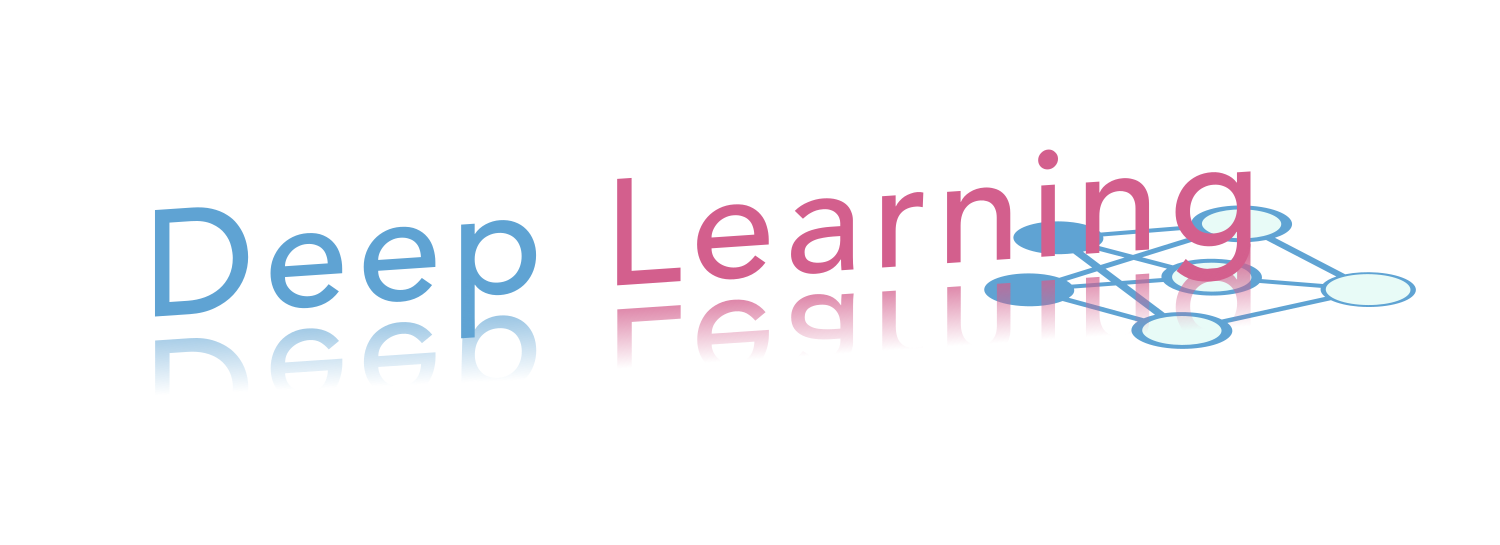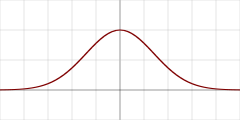jczic / Micromlp
Licence: mit
A micro neural network multilayer perceptron for MicroPython (used on ESP32 and Pycom modules)
Stars: ✭ 92
Programming Languages
python
139335 projects - #7 most used programming language
micropython
64 projects
Labels
Projects that are alternatives of or similar to Micromlp
Basic reinforcement learning
An introductory series to Reinforcement Learning (RL) with comprehensive step-by-step tutorials.
Stars: ✭ 826 (+797.83%)
Mutual labels: artificial-intelligence, ai, deeplearning, q-learning
Best ai paper 2020
A curated list of the latest breakthroughs in AI by release date with a clear video explanation, link to a more in-depth article, and code
Stars: ✭ 2,140 (+2226.09%)
Mutual labels: artificial-intelligence, ai, deeplearning
Airsim
Open source simulator for autonomous vehicles built on Unreal Engine / Unity, from Microsoft AI & Research
Stars: ✭ 12,528 (+13517.39%)
Mutual labels: artificial-intelligence, ai, deeplearning
Pycm
Multi-class confusion matrix library in Python
Stars: ✭ 1,076 (+1069.57%)
Mutual labels: artificial-intelligence, ai, deeplearning
Fixy
Amacımız Türkçe NLP literatüründeki birçok farklı sorunu bir arada çözebilen, eşsiz yaklaşımlar öne süren ve literatürdeki çalışmaların eksiklerini gideren open source bir yazım destekleyicisi/denetleyicisi oluşturmak. Kullanıcıların yazdıkları metinlerdeki yazım yanlışlarını derin öğrenme yaklaşımıyla çözüp aynı zamanda metinlerde anlamsal analizi de gerçekleştirerek bu bağlamda ortaya çıkan yanlışları da fark edip düzeltebilmek.
Stars: ✭ 165 (+79.35%)
Mutual labels: artificial-intelligence, ai, deeplearning
Text summurization abstractive methods
Multiple implementations for abstractive text summurization , using google colab
Stars: ✭ 359 (+290.22%)
Mutual labels: artificial-intelligence, ai, deeplearning
Ffdl
Fabric for Deep Learning (FfDL, pronounced fiddle) is a Deep Learning Platform offering TensorFlow, Caffe, PyTorch etc. as a Service on Kubernetes
Stars: ✭ 640 (+595.65%)
Mutual labels: artificial-intelligence, ai, deeplearning
Autodl
Automated Deep Learning without ANY human intervention. 1'st Solution for AutoDL [email protected]
Stars: ✭ 854 (+828.26%)
Mutual labels: artificial-intelligence, ai, deeplearning
Mumbai Ai Meetup
Repository for all the content presented in the Mumbai AI Meetup - https://www.meetup.com/mumbai-ai-meetup
Stars: ✭ 48 (-47.83%)
Mutual labels: artificial-intelligence, ai
Evalai
☁️ 🚀 📊 📈 Evaluating state of the art in AI
Stars: ✭ 1,087 (+1081.52%)
Mutual labels: artificial-intelligence, ai
Gbrain
GPU Javascript Library for Machine Learning
Stars: ✭ 48 (-47.83%)
Mutual labels: ai, deeplearning
Deep traffic
MIT DeepTraffic top 2% solution (75.01 mph) 🚗.
Stars: ✭ 47 (-48.91%)
Mutual labels: artificial-intelligence, q-learning
Openvoiceos
OpenVoiceOS is a minimalistic linux OS bringing the open source voice assistant Mycroft A.I. to embbeded, low-spec headless and/or small (touch)screen devices.
Stars: ✭ 64 (-30.43%)
Mutual labels: artificial-intelligence, ai
Clarifai Apple Sdk
Artificial Intelligence with a Vision
Stars: ✭ 46 (-50%)
Mutual labels: artificial-intelligence, ai
Coursera Natural Language Processing Specialization
Programming assignments from all courses in the Coursera Natural Language Processing Specialization offered by deeplearning.ai.
Stars: ✭ 39 (-57.61%)
Mutual labels: artificial-intelligence, deeplearning
Tic Tac Toe
An unbeatable game of Tic Tac Toe.
Stars: ✭ 57 (-38.04%)
Mutual labels: artificial-intelligence, ai
Aif360
A comprehensive set of fairness metrics for datasets and machine learning models, explanations for these metrics, and algorithms to mitigate bias in datasets and models.
Stars: ✭ 1,312 (+1326.09%)
Mutual labels: artificial-intelligence, ai
Caffe2
Caffe2 is a lightweight, modular, and scalable deep learning framework.
Stars: ✭ 8,409 (+9040.22%)
Mutual labels: artificial-intelligence, ai
MicroMLP is a micro artificial neural network multilayer perceptron (principally used on ESP32 and Pycom modules)
Very easy to integrate and very light with one file only :
"microMLP.py"
MicroMLP features :
- Modifiable multilayer and connections structure
- Integrated bias on neurons
- Plasticity of the connections included
- Activation functions by layer
- Parameters Alpha, Eta and Gain
- Managing set of examples and learning
- QLearning functions to use reinforcement learning
- Save and load all structure to/from json file
- Various activation functions :
- Heaviside binary step
- Logistic (sigmoid or soft step)
- Hyperbolic tangent
- SoftPlus rectifier
- ReLU (rectified linear unit)
- Gaussian function
Use deep learning for :
- Signal processing (speech processing, identification, filtering)
- Image processing (compression, recognition, patterns)
- Control (diagnosis, quality control, robotics)
- Optimization (planning, traffic regulation, finance)
- Simulation (black box simulation)
- Classification (DNA analysis)
- Approximation (unknown function, complex function)
Using MicroMLP static functions :
| Name | Function |
|---|---|
| Create | mlp = MicroMLP.Create(neuronsByLayers, activationFuncName, layersAutoConnectFunction=None, useBiasValue=1.0) |
| LoadFromFile | mlp = MicroMLP.LoadFromFile(filename) |
Using MicroMLP speedly creation of a neural network :
from microMLP import MicroMLP
mlp = MicroMLP.Create([3, 10, 2], "Sigmoid", MicroMLP.LayersFullConnect)
Using MicroMLP main class :
| Name | Function |
|---|---|
| Constructor | mlp = MicroMLP() |
| GetLayer | layer = mlp.GetLayer(layerIndex) |
| GetLayerIndex | idx = mlp.GetLayerIndex(layer) |
| RemoveLayer | mlp.RemoveLayer(layer) |
| GetInputLayer | inputLayer = mlp.GetInputLayer() |
| GetOutputLayer | outputLayer = mlp.GetOutputLayer() |
| Learn | ok = mlp.Learn(inputVectorNNValues, targetVectorNNValues) |
| Test | ok = mlp.Test(inputVectorNNValues, targetVectorNNValues) |
| Predict | outputVectorNNValues = mlp.Predict(inputVectorNNValues) |
| QLearningLearnForChosenAction | ok = mlp.QLearningLearnForChosenAction(stateVectorNNValues, rewardNNValue, pastStateVectorNNValues, chosenActionIndex, terminalState=True, discountFactorNNValue=None) |
| QLearningPredictBestActionIndex | bestActionIndex = mlp.QLearningPredictBestActionIndex(stateVectorNNValues) |
| SaveToFile | ok = mlp.SaveToFile(filename) |
| AddExample | ok = mlp.AddExample(inputVectorNNValues, targetVectorNNValues) |
| ClearExamples | mlp.ClearExamples() |
| LearnExamples | learnCount = mlp.LearnExamples(maxSeconds=30, maxCount=None, stopWhenLearned=True, printMAEAverage=True) |
| Property | Example | Read/Write |
|---|---|---|
| Layers | mlp.Layers |
get |
| LayersCount | mlp.LayersCount |
get |
| IsNetworkComplete | mlp.IsNetworkComplete |
get |
| MSE | mlp.MSE |
get |
| MAE | mlp.MAE |
get |
| MSEPercent | mlp.MSEPercent |
get |
| MAEPercent | mlp.MAEPercent |
get |
| ExamplesCount | mlp.ExamplesCount |
get |
Using MicroMLP to learn the XOr problem (with hyperbolic tangent) :
from microMLP import MicroMLP
mlp = MicroMLP.Create( neuronsByLayers = [2, 2, 1],
activationFuncName = MicroMLP.ACTFUNC_TANH,
layersAutoConnectFunction = MicroMLP.LayersFullConnect )
nnFalse = MicroMLP.NNValue.FromBool(False)
nnTrue = MicroMLP.NNValue.FromBool(True)
mlp.AddExample( [nnFalse, nnFalse], [nnFalse] )
mlp.AddExample( [nnFalse, nnTrue ], [nnTrue ] )
mlp.AddExample( [nnTrue , nnTrue ], [nnFalse] )
mlp.AddExample( [nnTrue , nnFalse], [nnTrue ] )
learnCount = mlp.LearnExamples()
print( "LEARNED :" )
print( " - False xor False = %s" % mlp.Predict([nnFalse, nnFalse])[0].AsBool )
print( " - False xor True = %s" % mlp.Predict([nnFalse, nnTrue] )[0].AsBool )
print( " - True xor True = %s" % mlp.Predict([nnTrue , nnTrue] )[0].AsBool )
print( " - True xor False = %s" % mlp.Predict([nnTrue , nnFalse])[0].AsBool )
if mlp.SaveToFile("mlp.json") :
print( "MicroMLP structure saved!" )
| Variable | Description | Default |
|---|---|---|
mlp.Eta |
Weighting of the error correction | 0.30 |
mlp.Alpha |
Strength of connections plasticity | 0.75 |
mlp.Gain |
Network learning gain | 0.99 |
mlp.CorrectLearnedMAE |
Threshold of self-learning error | 0.02 |
| Layers auto-connect function | Detail |
|---|---|
MicroMLP.LayersFullConnect |
Network fully connected |
Using MicroMLP.Layer class :
| Name | Function |
|---|---|
| Constructor | layer = MicroMLP.Layer(parentMicroMLP, activationFuncName=None, neuronsCount=0) |
| GetLayerIndex | idx = layer.GetLayerIndex() |
| GetNeuron | neuron = layer.GetNeuron(neuronIndex) |
| GetNeuronIndex | idx = layer.GetNeuronIndex(neuron) |
| AddNeuron | layer.AddNeuron(neuron) |
| RemoveNeuron | layer.RemoveNeuron(neuron) |
| GetMeanSquareError | mse = layer.GetMeanSquareError() |
| GetMeanAbsoluteError | mae = layer.GetMeanAbsoluteError() |
| GetMeanSquareErrorAsPercent | mseP = layer.GetMeanSquareErrorAsPercent() |
| GetMeanAbsoluteErrorAsPercent | maeP = layer.GetMeanAbsoluteErrorAsPercent() |
| Remove | layer.Remove() |
| Property | Example | Read/Write |
|---|---|---|
| ParentMicroMLP | layer.ParentMicroMLP |
get |
| ActivationFuncName | layer.ActivationFuncName |
get |
| Neurons | layer.Neurons |
get |
| NeuronsCount | layer.NeuronsCount |
get |
Using MicroMLP.InputLayer(Layer) class :
| Name | Function |
|---|---|
| Constructor | inputLayer = MicroMLP.InputLayer(parentMicroMLP, neuronsCount=0) |
| SetInputVectorNNValues | ok = inputLayer.SetInputVectorNNValues(inputVectorNNValues) |
Using MicroMLP.OutputLayer(Layer) class :
| Name | Function |
|---|---|
| Constructor | outputLayer = MicroMLP.OutputLayer(parentMicroMLP, activationFuncName, neuronsCount=0) |
| GetOutputVectorNNValues | outputVectorNNValues = outputLayer.GetOutputVectorNNValues() |
| ComputeTargetLayerError | ok = outputLayer.ComputeTargetLayerError(targetVectorNNValues) |
Using MicroMLP.Neuron class :
| Name | Function |
|---|---|
| Constructor | neuron = MicroMLP.Neuron(parentLayer) |
| GetNeuronIndex | idx = neuron.GetNeuronIndex() |
| GetInputConnections | connections = neuron.GetInputConnections() |
| GetOutputConnections | connections = neuron.GetOutputConnections() |
| AddInputConnection | neuron.AddInputConnection(connection) |
| AddOutputConnection | neuron.AddOutputConnection(connection) |
| RemoveInputConnection | neuron.RemoveInputConnection(connection) |
| RemoveOutputConnection | neuron.RemoveOutputConnection(connection) |
| SetBias | neuron.SetBias(bias) |
| GetBias | neuron.GetBias() |
| SetOutputNNValue | neuron.SetOutputNNValue(nnvalue) |
| ComputeValue | neuron.ComputeValue() |
| ComputeError | neuron.ComputeError(targetNNValue=None) |
| Remove | neuron.Remove() |
| Property | Example | Read/Write |
|---|---|---|
| ParentLayer | neuron.ParentLayer |
get |
| ComputedOutput | neuron.ComputedOutput |
get |
| ComputedDeltaError | neuron.ComputedDeltaError |
get |
| ComputedSignalError | neuron.ComputedSignalError |
get |
Using MicroMLP.Connection class :
| Name | Function |
|---|---|
| Constructor | connection = MicroMLP.Connection(neuronSrc, neuronDst, weight=None) |
| UpdateWeight | connection.UpdateWeight(eta, alpha) |
| Remove | connection.Remove() |
| Property | Example | Read/Write |
|---|---|---|
| NeuronSrc | connection.NeuronSrc |
get |
| NeuronDst | connection.NeuronDst |
get |
| Weight | connection.Weight |
get |
Using MicroMLP.Bias class :
| Name | Function |
|---|---|
| Constructor | bias = MicroMLP.Bias(neuronDst, value=1.0, weight=None) |
| UpdateWeight | bias.UpdateWeight(eta, alpha) |
| Remove | bias.Remove() |
| Property | Example | Read/Write |
|---|---|---|
| NeuronDst | bias.NeuronDst |
get |
| Value | bias.Value |
get |
| Weight | bias.Weight |
get |
Using MicroMLP.NNValue static functions :
| Name | Function |
|---|---|
| FromPercent | nnvalue = MicroMLP.NNValue.FromPercent(value) |
| NewPercent | nnvalue = MicroMLP.NNValue.NewPercent() |
| FromByte | nnvalue = MicroMLP.NNValue.FromByte(value) |
| NewByte | nnvalue = MicroMLP.NNValue.NewByte() |
| FromBool | nnvalue = MicroMLP.NNValue.FromBool(value) |
| NewBool | nnvalue = MicroMLP.NNValue.NewBool() |
| FromAnalogSignal | nnvalue = MicroMLP.NNValue.FromAnalogSignal(value) |
| NewAnalogSignal | nnvalue = MicroMLP.NNValue.NewAnalogSignal() |
Using MicroMLP.NNValue class :
| Name | Function |
|---|---|
| Constructor | nnvalue = MicroMLP.NNValue(minValue, maxValue, value) |
| Property | Example | Read/Write |
|---|---|---|
| AsFloat | nnvalue.AsFloat = 639.513 |
get / set |
| AsInt | nnvalue.AsInt = 12345 |
get / set |
| AsPercent | nnvalue.AsPercent = 65 |
get / set |
| AsByte | nnvalue.AsByte = b'\x75' |
get / set |
| AsBool | nnvalue.AsBool = True |
get / set |
| AsAnalogSignal | nnvalue.AsAnalogSignal = 0.39472 |
get / set |
By JC`zic for HC² ;')
Keep it simple, stupid 👍
Note that the project description data, including the texts, logos, images, and/or trademarks,
for each open source project belongs to its rightful owner.
If you wish to add or remove any projects, please contact us at [email protected].








